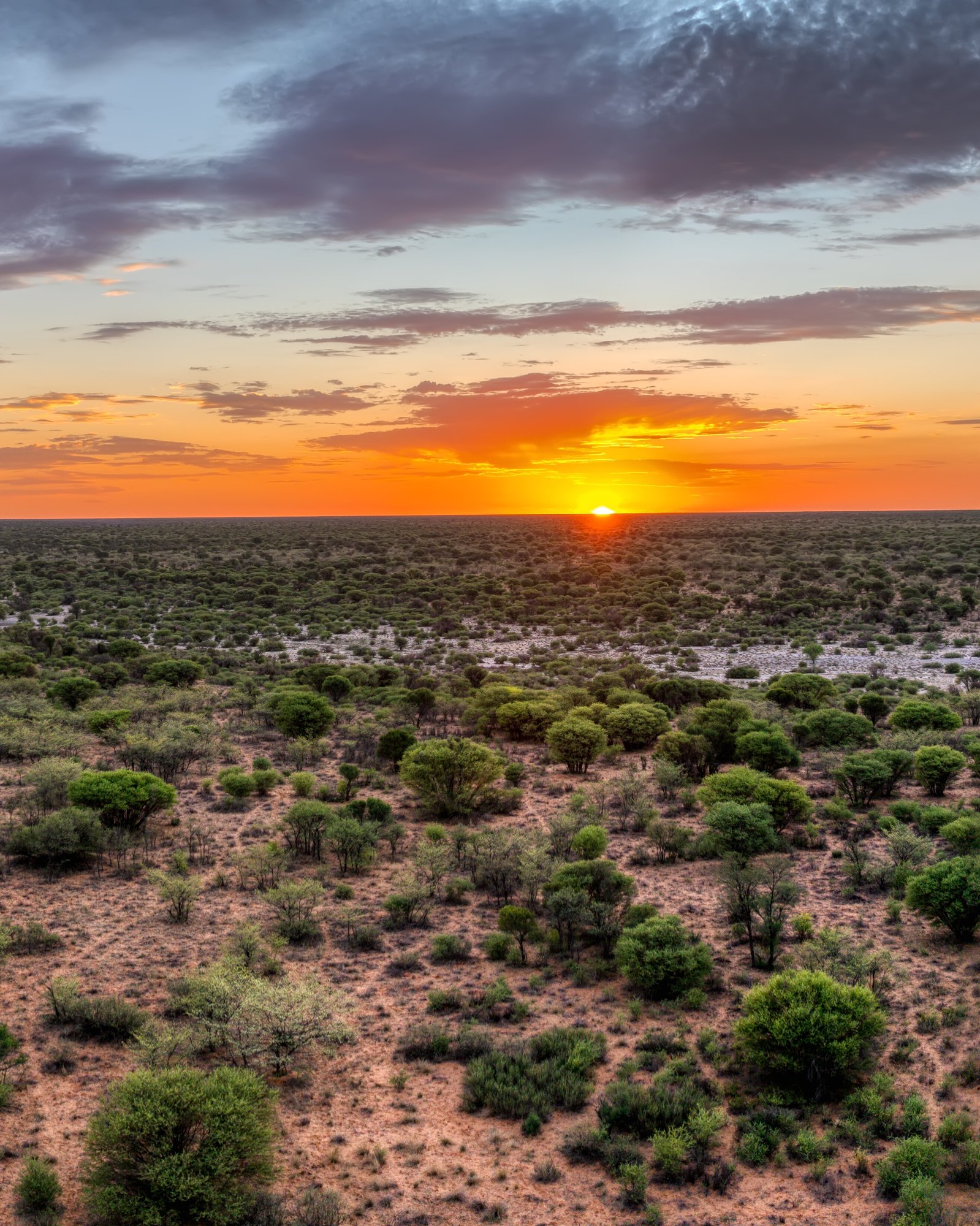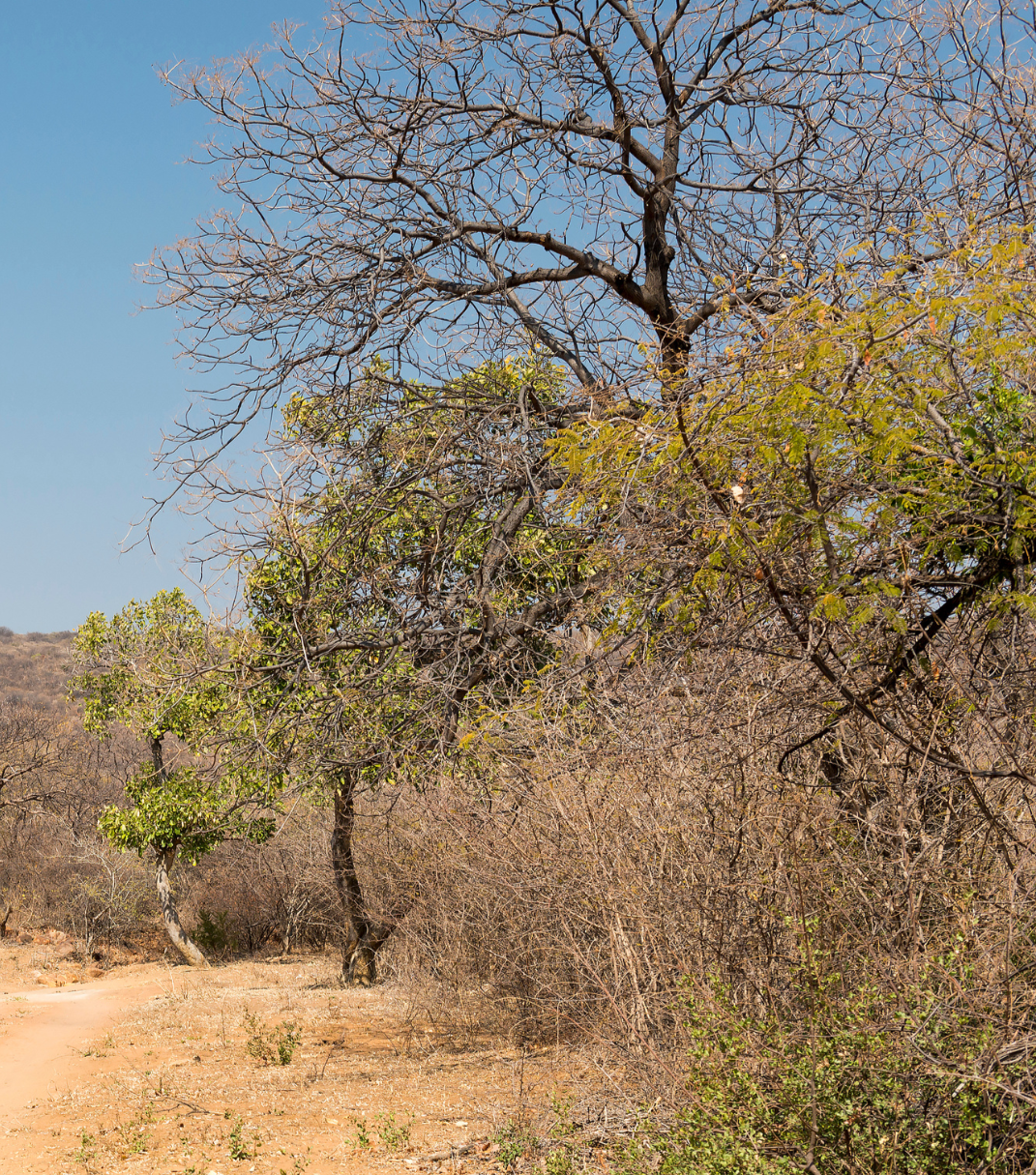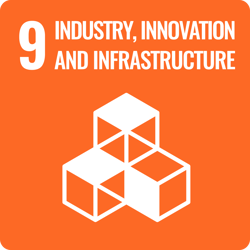Boomitra Oasis Biomass Carbon Removal and Storage Project
Restoring degraded savannas and delivering durable carbon removal through innovative biomass burial

Our Oasis Biomass Carbon Removal and Storage Project
Bush encroachment, a widespread challenge in Botswana and across the region, occurs when invasive woody shrubs overtake savanna grasslands—degrading biodiversity, reducing grazing productivity, and increasing wildfire risk. For many landowners, the cost of removing these encroaching species is too high, and current practices are limited to burning or indiscriminate killing with chemical treatments or mechanical means—all of which have negative consequences and leave the ecosystem and livelihoods at risk.
Boomitra’s approach to biomass burial transforms the bush encroachment challenge into a climate solution. We work with local expert partners to selectively remove targeted woody species, dry and process biomass into dense, sealed bales, then bury the bales underground at secure sites. This process durably stores carbon for over 100 years, while restoring key savanna ecosystems—resulting in improved land productivity, increased biodiversity, restored habitats, and job creation.
How the process works
By combining bush encroachment mitigation and long-term storage of woody biomass, this project delivers both durable carbon storage and a range of ecosystem benefits. The methods are rooted in core BiCRS principles and include innovations tailored to the region’s specific conditions and biomass sources.

The process begins with the selective harvesting of approximately 80% of woody biomass, targeting key encroaching species while preserving other vegetation to maintain ecological balance and encourage savanna regeneration. Harvesting is done by cutting and not digging to minimize soil disturbance.

Once harvested, the biomass is naturally dried in windrows until it reaches 20% or less moisture content, ensuring stability and minimizing decomposition risks.

The dried biomass is next chipped or ground to create consistently sized pieces and to prepare it for baling.

The processed biomass is baled to both densify and protect it from future degradation. It is wrapped in multiple layers of silage film to create a barrier to moisture and oxygen—creating an environment supporting long-term stability. Baling the biomass creates standard units, providing enhanced durability and optimizing storage space.

Storage facilities are placed strategically throughout the harvest area to minimize transportation emissions. Prior to storage, the bales are weighed, serialized, and tracked to maintain accurate carbon storage records. The bales are carefully placed in specially designed trenches and covered with soil to prevent disturbance. Detailed protocols ensure long-term preservation and protection of the sites and monitoring of re-emissions to ensure the integrity and permanence of stored biomass.
.png?width=850&height=566&name=Step%206%20-%20Re-establish%20Area%20(1).png)
Completed storage sites will be re-established and managed to prevent future bush encroachment, and the overall project area will be part of a larger ecosystem restoration effort involving the implementation of appropriate after-care practices.
"Our bush densities have now reached the point where it can no longer be ignored, and the bush to grass balance needs to be restored."
-Owner, The Oasis Farm, Botswana

Be the first to get project updates
Sign up for our newsletter to get the latest news, insights, and project updates straight to your inbox.
"We’ve built a strong track record managing complex soil carbon projects in over 10 countries. Now we’re applying that operational expertise to a new, high-integrity durable removal pathway—one that can solve a real problem for ranchers and landowners across Southern Africa. This is just the beginning."
-Aadith Moorthy, Boomitra CEO & Founder












Where will this project take place?
The project will take place on a 10,000-hectare project area in the Ghanzi region of Botswana.
Situated on the northeastern corner of Botswana, the project area lies in the middle of the Kalahari Desert, one of the largest sand bodies on Earth.
It sits at an elevation of 1,100 meters above sea level, with a 20-meter drop in elevation over 20 kilometers in an easterly direction.
What is the biomass source for this project?
Our biomass source for this project is generated from the removal of encroaching woody species, which are abundant in the project area and in the region as a whole. The initial instance of the project on the 10,000-hectare project site at Oasis Farm alone will provide a sustainable source of biomass for approximately ten years of project operations. Given the scope of the bush encroachment problem in the region, the project is very scalable.
How do you measure the carbon sequestration for this project?
Our approach of baling the biomass creates standard units, providing enhanced durability and optimizing storage space. In addition, it provides a straightforward way of accurately and transparently tracking the carbon sequestered through the project. Prior to storage, bales are weighed, numbered, and logged to maintain accurate carbon storage records.
How do you prevent and manage reversals?
How do you prevent re-emissions?
How does this impact local communities?
Boomitra empowers local communities by creating economic opportunities and improving grazing land productivity. Our projects create jobs in biomass harvesting, preparation, and monitoring while supporting livestock grazing and agricultural productivity. By restoring usable grazing land, we strengthen food security and improve livelihoods for local communities directly affected by bush encroachment. Our strong partnerships with local stakeholders ensure community engagement and project alignment with regional priorities, further enhancing the long-term sustainability of our initiatives.
What ecological co-benefits will you see from this project?
Boomitra’s method delivers measurable social and ecological co-benefits. Ecologically, it restores degraded grasslands by removing encroaching woody species, which contributes to enhanced soil health, water retention, and biodiversity. The restored ecosystem will serve as critical habitats for species like cheetahs, supporting broader conservation goals. Additionally, by eliminating open burning of woody biomass, the project improves air quality and reduces harmful emissions.
How are transportation-related emissions minimized in the project?
Storage sites will be strategically placed within the harvesting areas of the project area in order to minimize transportation of biomass at all stages of the operation. Biomass will be transported by truck within the project area. The average hauling distance will be minimal and typically less than several kilometers. The proximity of storage sites and harvesting zones along with on-site processing contribute to both economic and carbon efficiency—reducing transportation emissions and logistical complexity.
Why bury biomass instead of using it for fuel or electricity generation? Isn’t that a missed opportunity?
It’s a great question—and one we’ve carefully considered. While energy generation from biomass can be valuable in some contexts, Boomitra’s project in Botswana is purpose-built with different goals in mind.
Encroaching woody shrubs are degrading rangelands, threatening biodiversity, and reducing grazing productivity for ranchers across southern Africa. Unlike traditional methods of bush removal, Boomitra’s approach offers a scalable, more sustainable solution that both works in remote regions and delivers a durable carbon storage solution.
- Ecosystem regeneration and carbon permanence are the goals: Our focus is to permanently remove atmospheric carbon and regenerate degraded savannas. Burial of biomass avoids combustion and transportation emissions associated with power generation and ensures carbon is durably stored for 100+ years, all while helping improve land productivity and biodiversity.
- Remote geography makes energy conversion impractical: The project sites are far from power infrastructure or processing facilities, and in many locations, there is no access to the energy grid. Transporting bulky, low-density biomass over long distances would require extensive trucking, increasing project emissions, cost, and complexity. Given our goal of durable carbon storage, burial is the appropriate option.
- It’s a solution for landowners, not just carbon buyers: For many ranchers and landowners, bush encroachment has made large portions of land unproductive or unusable. Our project helps them reclaim their land, reduce fire risk, and restore ecosystem balance.
Our project is a multi-benefit solution that addresses both localized and global challenges.
Doesn’t removing woody biomass strip nutrients from the soil and harm long-term land health?
That’s an important concern—and one we address directly in our project design. In short, our project will actually improve soil health over time and help restore ecosystem balance, which has been disturbed due to bush encroachment. Here’s why:
- We’re removing encroacher bush which has degraded the ecosystem. The biomass in question comes from encroaching woody shrubs that have overtaken savanna grasslands, displacing diverse herbaceous species and suppressing natural nutrient cycles. These shrubs typically form dense thickets, reduce groundcover, and outcompete grasses—contributing more to degradation than to fertility.
- Encroaching shrubs don’t contribute to soil enrichment in the way that grasses do. Many of these species are slow to decompose, nutrient-poor, and actively inhibit understory growth. So, their presence can actually reduce organic matter inputs, water infiltration, and microbial activity. Removing them helps restore natural nutrient cycling by allowing grasses and herbaceous plants to return in balance with woody trees and shrubs.
- Restoration improves nutrient cycling over time. Once bush thinning has been done, the land is typically recolonized by a diversity of grasses and forbs, which have higher turnover rates and contribute more effectively to soil organic matter, microbial health, and water retention. In many cases, this leads to net improvement in soil fertility over the long term.
- We leave roots and fine organic material in place. Our selective thinning and removal process focuses on above-ground woody biomass, meaning soil structure and below-ground carbon pools remain largely undisturbed, and leaves and other herbaceous parts of the encroacher bush will remain. This minimizes erosion risk, preserves microbial life, and delivers nutrients back into the soil.
- Aftercare is an important component. Regenerative grazing applied after the initial bush thinning is key to further stimulating plant growth and improving the soil microbiome—leading to improved soil health, increased production, and drought resistance.
Ultimately, our goal is both carbon removal and ecosystem regeneration. By thinning the encroacher bush thoughtfully, we create conditions for healthier soils, more productive grazing land, and long-term resilience for both the land and its stewards.
